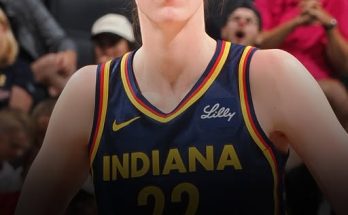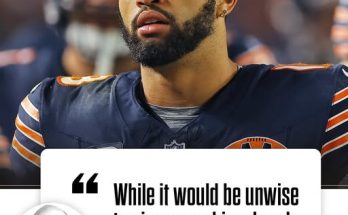When a player becomes the subject of a viral clip, it often says as much about the culture of college football fandom as it does about the individual athlete. Brayson Hubbard, the Alabama defensive back who found himself at the center of social media attention during the Crimson Tide’s matchup against Florida State, learned this firsthand when a short clip of him jogging during a play spread like wildfire online. The clip, stripped of context, became a talking point for fans, rival supporters, and analysts who love nothing more than dissecting every single moment of a big game. Hubbard, though, has now responded, and in doing so, he’s shed light not only on the incident itself but also on the human side of athletes who live under the magnifying glass of constant scrutiny. His words are worth unpacking, because they highlight how narratives form and why it’s so easy for outsiders to misunderstand what really goes on in the heat of competition.
The viral clip shows Hubbard seemingly jogging behind the play instead of sprinting at full speed as Florida State gained yardage. To the casual observer, it looked like a moment of laziness or lack of urgency. Fans pounced on it, with some using it as ammunition to criticize Alabama’s defensive effort as a whole or to single out Hubbard as not being locked in. Clips like this thrive on Twitter, TikTok, and Instagram because they are short, easy to share, and can be framed in any number of ways that stir reaction. The reality of football, however, is more complicated. Plays are fast, players have assignments that aren’t always obvious to viewers, and fatigue or game situations can affect what looks like effort. When Hubbard spoke about the clip, he emphasized that context matters and that what was captured in that moment wasn’t a reflection of his mindset, preparation, or overall performance. He pointed out that he was reading the play and angling himself in case the runner cut back, and while the video looked bad in isolation, his intent and responsibilities were different from what people assumed.
What makes this story fascinating isn’t just Hubbard’s response but how the conversation around it highlights the way football is consumed in 2025. Fans have more access than ever to individual plays, slowed down, clipped, and shared out of sequence. A ten-second moment can overshadow an entire game of solid execution. For Hubbard, the response became a way to remind people that athletes aren’t robots—they have moments that might look questionable on camera, but that doesn’t mean their commitment or competitiveness should be called into question. He handled the backlash with maturity, acknowledging how the video might look to some while also standing firm that he knew his role on the field and wasn’t simply dogging it.
There’s a deeper lesson here for fans of the sport. Football has always been a game of perception as much as performance. When Nick Saban was coaching Alabama, for example, he was famous for saying that fans and media often don’t understand what players’ responsibilities actually are. A defensive back might appear to be out of position but could actually be executing his assignment in a coverage scheme that doesn’t make sense unless you know the call. Hubbard’s case is similar—what looks like “jogging” may have been situational awareness. This doesn’t excuse lack of effort when it happens, but it does show how easy it is to misinterpret snapshots. For young athletes like Hubbard, dealing with that misunderstanding is part of playing for a powerhouse program where every move is under the microscope.
What’s interesting about the way Hubbard responded is how calm and grounded he was. Instead of firing back defensively or mocking the critics, he took time to explain. He reminded everyone that football is a team sport and that one viral clip doesn’t define who a player is or how much he gives to the game. His approach reflects the maturity that coaches love to see—someone who doesn’t allow outside noise to rattle him, but also doesn’t shy away from addressing it. In today’s era of NIL deals, social media presence, and constant attention, how an athlete responds to these moments can be just as important as how they perform on the field. Hubbard turned what could have been a negative into a chance to communicate his mindset and show fans that he’s focused on the bigger picture.
For Alabama, this kind of moment can either fuel negativity or serve as a rallying point. Teammates came to Hubbard’s defense, with some suggesting that the outside world doesn’t see the full story of preparation and grind that goes into competing at this level. It becomes a bonding experience when a player gets singled out unfairly, because the locker room knows the truth. Hubbard’s willingness to respond publicly also signals confidence—he’s not afraid to own the narrative rather than letting it spiral without his voice. That shows leadership, even if he isn’t the most famous name on the roster.
The viral nature of the clip also taps into the way rival fan bases use moments like this to poke fun or stir up debate. Florida State fans had a field day with it, joking that Hubbard was taking a casual stroll while their offense rolled. Alabama critics pointed to it as a sign that the Tide no longer have the same defensive fire they once did. But Alabama fans pushed back, reminding everyone of Hubbard’s overall contributions and the fact that the defense as a whole still competed at a high level. The back-and-forth became less about what actually happened on the play and more about how each side could spin the story to support their larger narratives. This is where fan engagement thrives—everyone has a take, and those takes fuel conversation that stretches far beyond the actual game.
Moments like these also spark bigger conversations about effort and accountability in sports. Should athletes always be sprinting 100% even when the play looks decided? Do these viral clips hold players accountable or unfairly single them out? Opinions vary. Some argue that hustling until the whistle is non-negotiable, no matter the situation. Others point out that saving energy for future snaps, avoiding unnecessary risk of injury, or executing a role in a coverage can look like less than maximum effort but actually makes sense strategically. Hubbard’s situation becomes a case study in that debate, and it’s one reason why his response was so important—he reminded people that football isn’t as black-and-white as a 10-second clip makes it seem.
There’s also something to be said about the pressure these viral moments put on young athletes. Hubbard is still in the early stages of his college career, and being under that spotlight can be overwhelming. For some, it can shake confidence; for others, it can fuel motivation. From the way he responded, Hubbard seems to fall in the second category. He made it clear that he’s moving forward, using the criticism as fuel while not letting it define him. That kind of resilience is invaluable, not just in sports but in life. It sets a tone for how he’ll handle challenges in the future, both on and off the field.
This story also invites fans to reflect on how they consume sports. Do we sometimes forget that these are young men, still growing and learning, when we jump to judge them based on a clip? Do we contribute to a culture that values hot takes over understanding? Hubbard’s response encourages us to slow down and think before piling on. It also opens the door for more constructive engagement. Instead of mocking or criticizing, fans could use these moments to ask questions, seek clarity, or even support players as they learn and grow. That kind of engagement builds community rather than division, which is something college football needs more of.
At the end of the day, Brayson Hubbard’s jogging clip will probably fade into the endless archive of viral sports moments. What will last longer, however, is the way he handled it—with poise, clarity, and maturity. He turned a negative spotlight into an opportunity to show who he is as a competitor and a teammate. For Alabama fans, that’s reassuring. For neutral observers, it’s a reminder to look deeper than the surface when judging athletes. And for rival fans, it’s at least a lesson that sometimes the story isn’t as simple as it looks on your feed.
Now the question turns to you, the fans and readers. Do you think viral clips like this are fair critiques of athletes, or are they blown out of proportion by social media culture? Should players like Hubbard feel the need to respond, or should they let their play on the field speak for itself? And more importantly, what do you think moments like this say about the relationship between athletes and fans in today’s game? The conversation is wide open, and your perspective matters. Drop your thoughts in the comments below, share how you saw the clip, and let’s keep the discussion going—because these kinds of debates are what make following college football so compelling.



